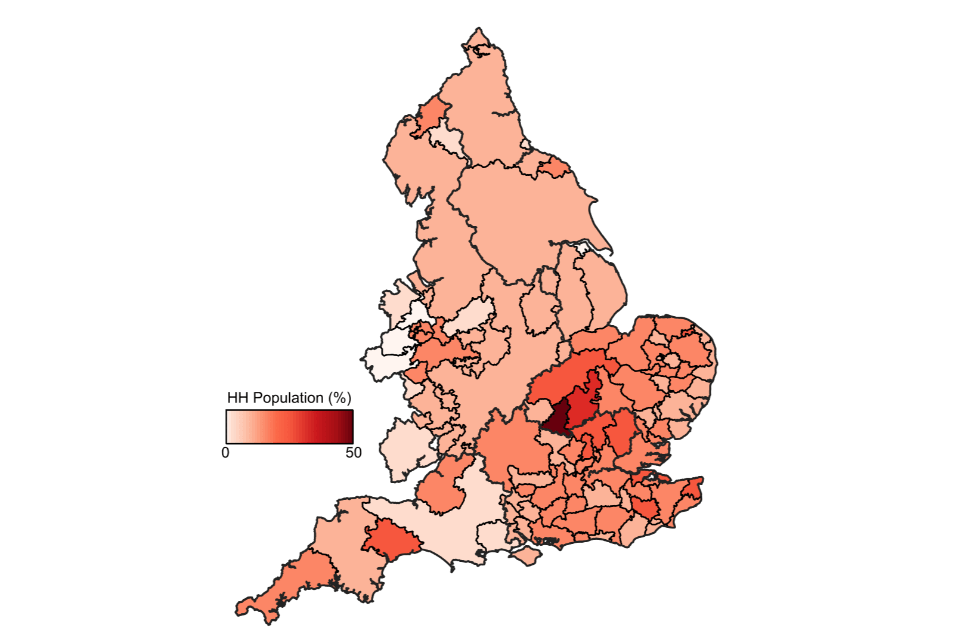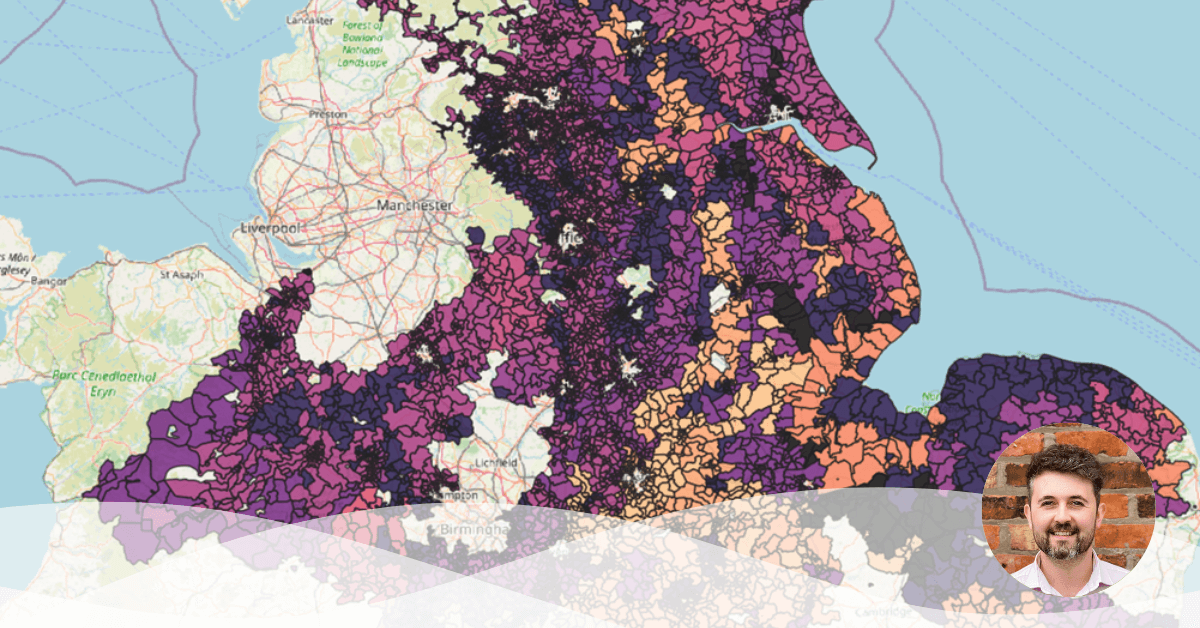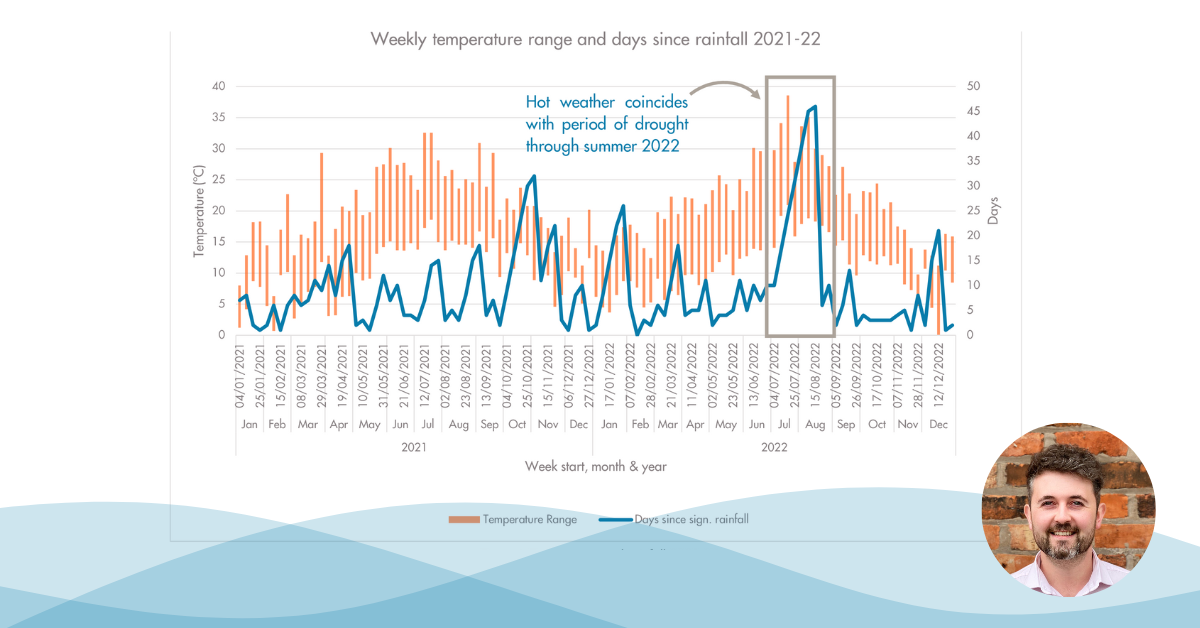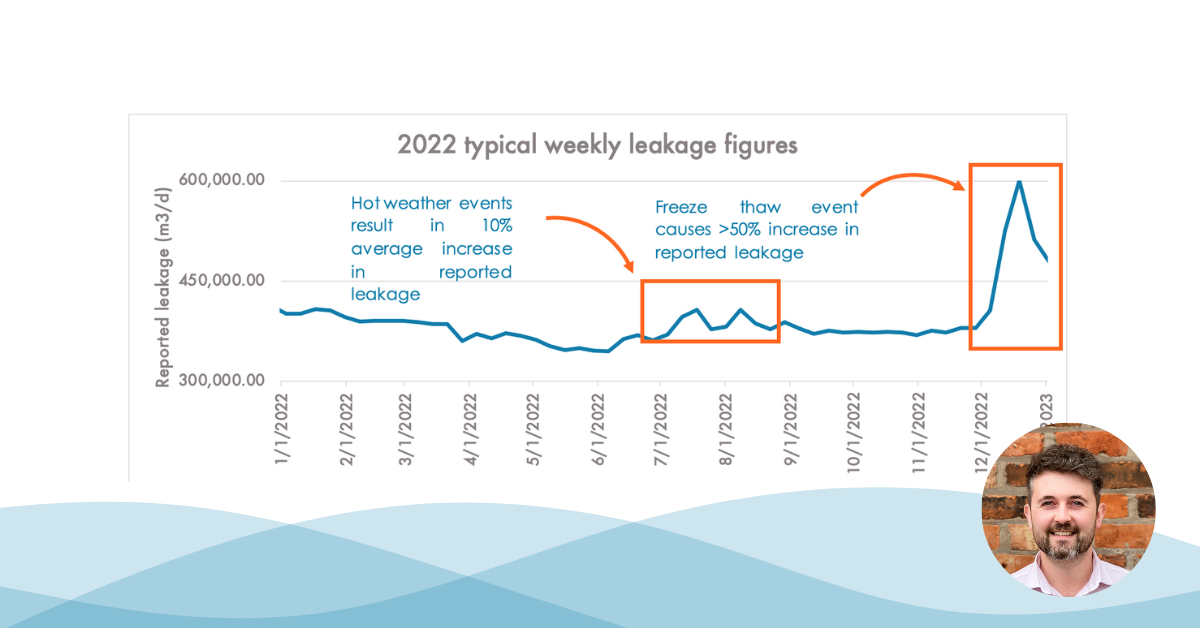Last month, the Environment Agency (EA) published its National Framework for Water Resources, a report published every five years that sets out the actions required by water companies, regulators, businesses, and the public to best manage water usage into the future.
The report made for interesting reading. With it in mind that England uses around 14 billion litres of water a day currently, the EA has stated we could be facing a 5 billion litre-a-day shortfall for public water supplies alone by 2055, ‘if no continued and enhanced action is taken’. For those of us who struggle to envisage such large quantities, the report helpfully notes that 5 billion litres is the volume of 4.5 Wembley Stadiums – an absolutely staggering quantity. Worse still, this huge figure doesn’t account for the extra 1 billion litres that may be needed by 2055 for water use other than for public supply. This could have huge ramifications; potentially limiting economic growth, harming energy supply resilience, and limiting food production.
So, quite a lot to think about! In this blog, we will review the scale of the challenge over the next 30 years as laid out in the EA’s latest framework.
To start with, the key factors. The framework identifies: pressures due to climate change, population growth, and environmental pressures as the major drivers of potential future water scarcity, while the necessity of supplying the country’s nascent data centres and hydrogen production facilities earn a significant honourable mention.
These are well known contributors to pressure on water resources but it’s worth reminding ourselves of their scale.
Climate change requires significant planning to protect supply. There is now an identified need to increase resilience of supply such that a 1-in-500 year drought can be overcome. The EA report notes that climate change is already affecting us and will continue to do so into the future, stating: ‘The amount of water that we reliably receive will continue to change with time. We are facing less water overall, with warmer and wetter winters, hotter and drier summers.’
Although produced every 5 years, this aspect of the report felt particularly timely following what was the driest spring (in England) for more than 130 years (source: Met Office).
: The % of average rainfall across the UK in Spring 2025 (Met Office)
In conjunction with low rainfall in the first half of 2025, the Met Office notes that eight of the ten warmest UK springs have occurred since the year 2000, and the three warmest springs have all occurred since 2017.
Forecasts used in water company plans show that the population in England is set to increase to over 71 million people by 2055, an increase of over 8 million people when compared with the current population. More homes and people will mean more water using appliances, more water needed to generate energy and produce food, and a greater demand for water-using services such as leisure activities. Below, in Figure 2, is a map provided by the EA which shows the projected increases in household population over the next 30 years.
Figure 2: Household population percentage increase from 2025 to 2055 from Water Resource Management Plans (WRMP24) forecasts (based on ONS data).
The top five projected increases in household population at Water Resource Zone level are listed below:
energy and food security. While we have already touched on the issue of climate change, the abstraction of water from rivers and groundwater is another major factor in the resilience of the water environment. Most businesses taking more than 20,000 litres a day directly from rivers or groundwater require an abstraction licence, but some older licences allow abstraction that can damage the environment. With some catchments already seeing unsustainable levels of abstraction, up to 3,200 Ml/d in reductions may be needed to address the problem of overextraction as it currently exists.
The report also highlights questions around land use over the next 30 years. Given the increasing population and need for housing, there is expected to be a nationwide increase in housing development, with 1.5 million new homes planned over the next 5 years alone. This stands alongside ambitious targets for environmental improvement, such as those contained in the 2021 Environment Act which features a target of at least 16.5% tree cover in England by 2050. The Forestry Strategy for England sets out that to reach net zero carbon emissions by 2050 the UK will need to accelerate rates of tree establishment to 30,000 ha a year.
Changes in land use will impact on the water environment in a variety of ways. As pressures on water resources grow, policy makers will need to consider how best to ensure that changes in land use do not negatively impact on water resources and the water environment.
There are also some unknowns to contend with. AI datacentres use a large amount of water to prevent their servers overheating and shutting down. With data centres designated as critical national infrastructure back in September 2024 and the government announcement it wants make the UK into an AI ‘superpower’ in January 2025, there are huge investments being made in UK data centres. At the time of writing, this greasing of the wheels for the industry has seen no requirement imposed on it to report how much clean water is being used to cool servers, despite large centres being capable of consuming millions of litres daily. With water usually taken from the public supply rather than alternative sources, the EA specifies that this is one of the most significant changes to projected usage in recent years.
Next: hydrogen production, which is increasingly part of the UK’s transition to net zero, requires significant amounts of water. Whether industry players favour electrolysis or Steam Methane Reforming (SMR) to produce hydrogen, both processes consume large volumes of water, either as direct input or for cooling and processing. With hydrogen now viewed as an essential part of the UK’s future energy independence, the government has a tricky course to set between its legally binding commitment to achieve net zero by 2050 and ensuring the UK has enough clean water to successfully transition into the second half of the 21st century.
Water companies are very aware they have their work cut out for them, but every sector has a part to play. Jean Spencer, the Independent Chair of the National Framework, perhaps says it most succinctly in her foreward, ‘Change on the scale needed requires collaborative action across government and all major water users, as well as a national narrative to engage businesses and consumers in the role we can all play in ensuring resilient water resources and a thriving environment.’
The EA expects 60% of the water deficit anticipated by 2055 to be addressed by water companies managing demand and dramatically reducing leaks. The remaining 40% would come from boosting supply, including the building of new reservoirs and water transfer schemes. In support of this, the report notes, the government has secured £104 billion in private sector spending in water company infrastructure over the next five years, including £8 billion committed to boost water supply and manage demand. Plans include 10 new reservoirs, nine desalination schemes, and seven water recycling projects by 2050.
The EA states: ‘We expect companies to reduce leakage. The water companies have collectively committed to reduce leakage by 50% by 2050. This will play an important part in reducing demand and helping ensure a secure supply balance in the future. It is vital that water companies deliver against this commitment, and that in doing so, they embrace new technologies.’
Here at SME Water, we have been hard at work developing the solutions that will empower water companies to make the most of the profusion of data that is now available. To learn more, reach out to one of the team through Linkedin or via our contact@sme-water.co.uk email address.





